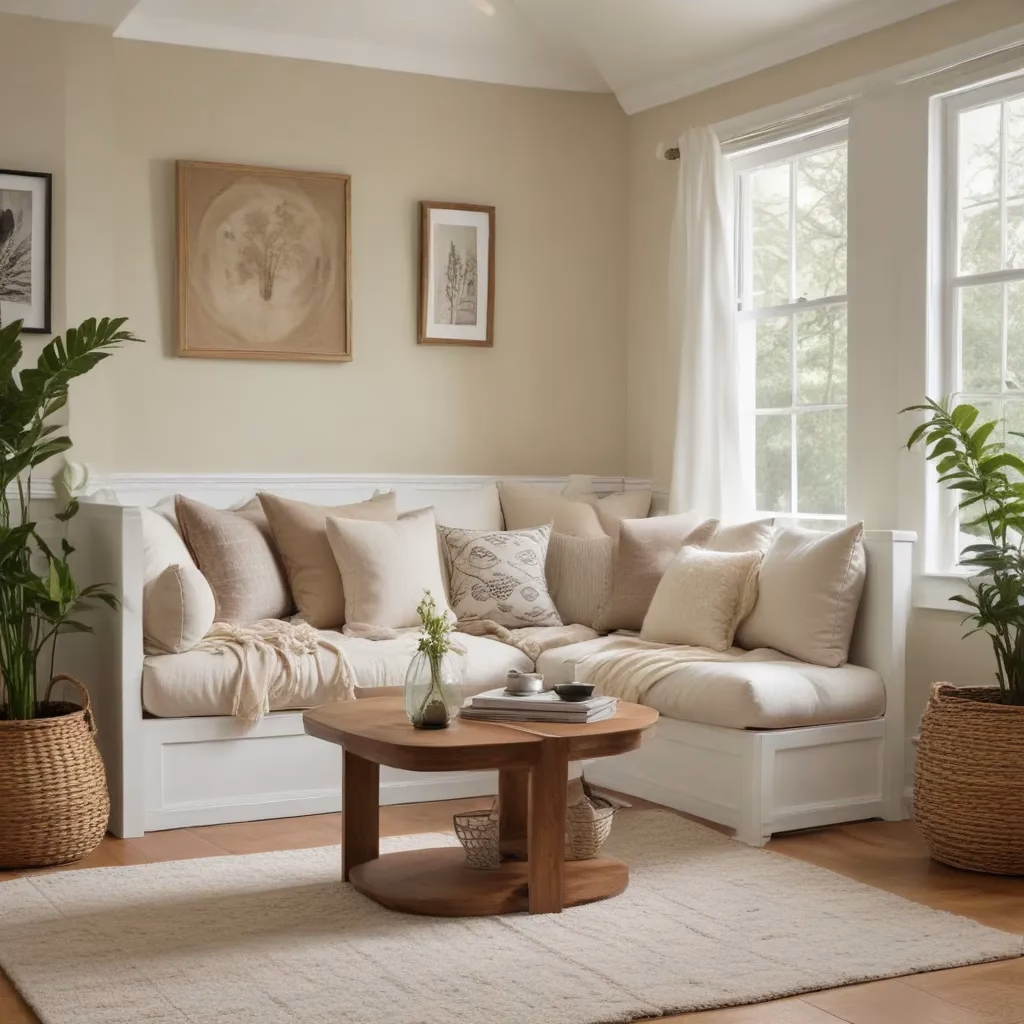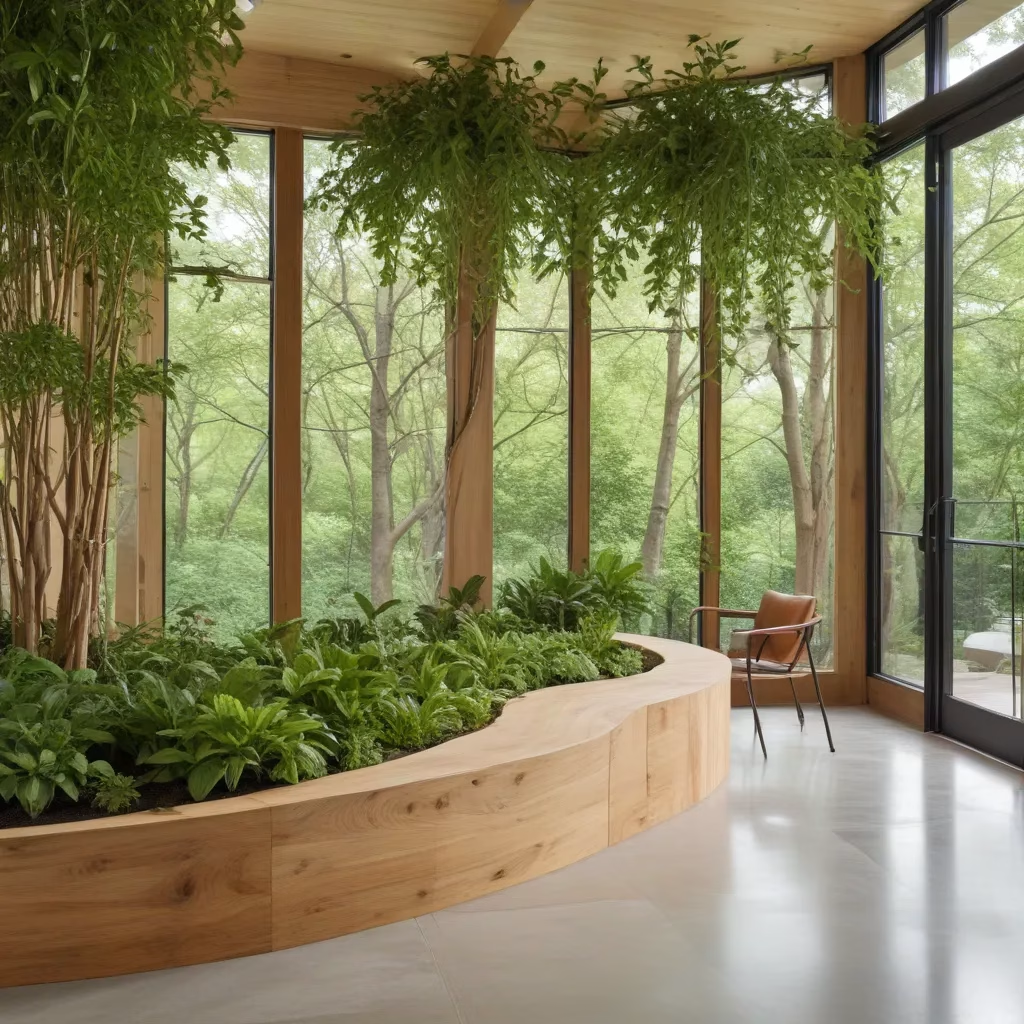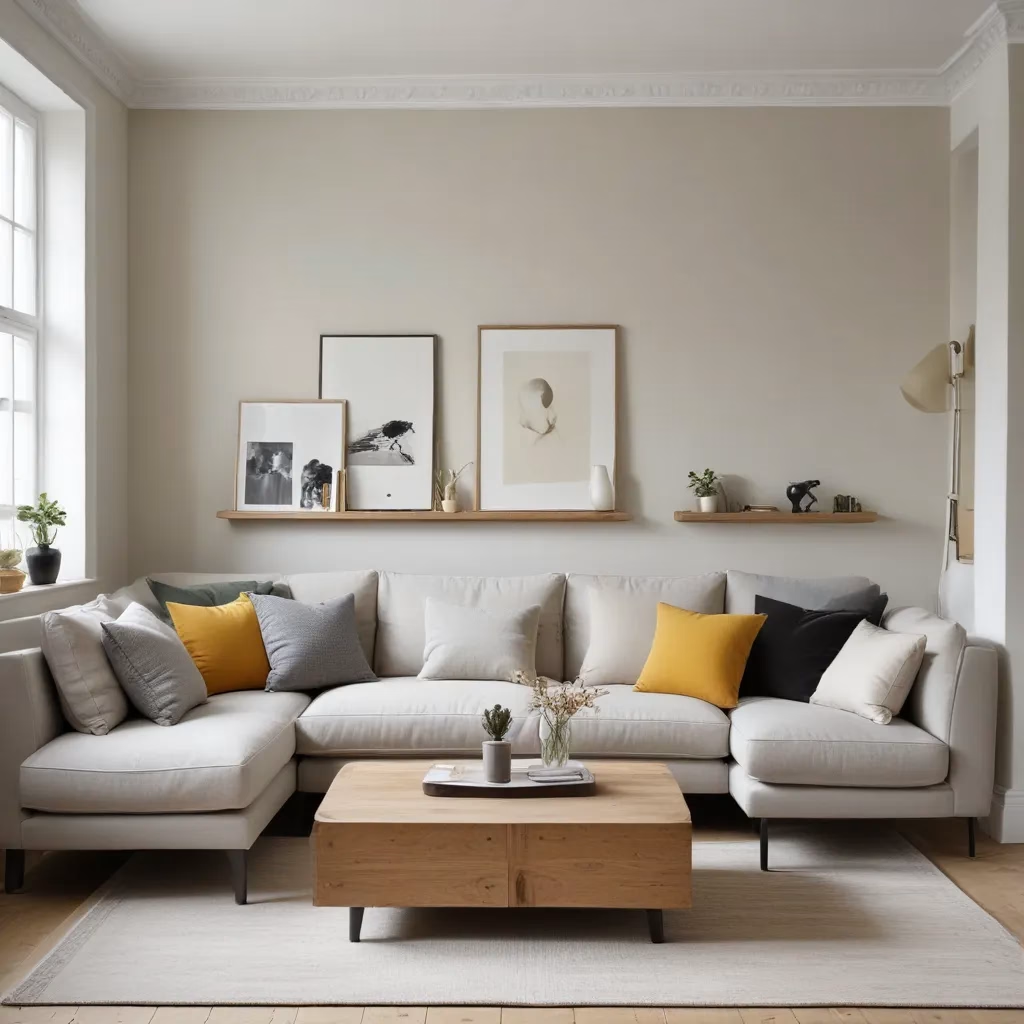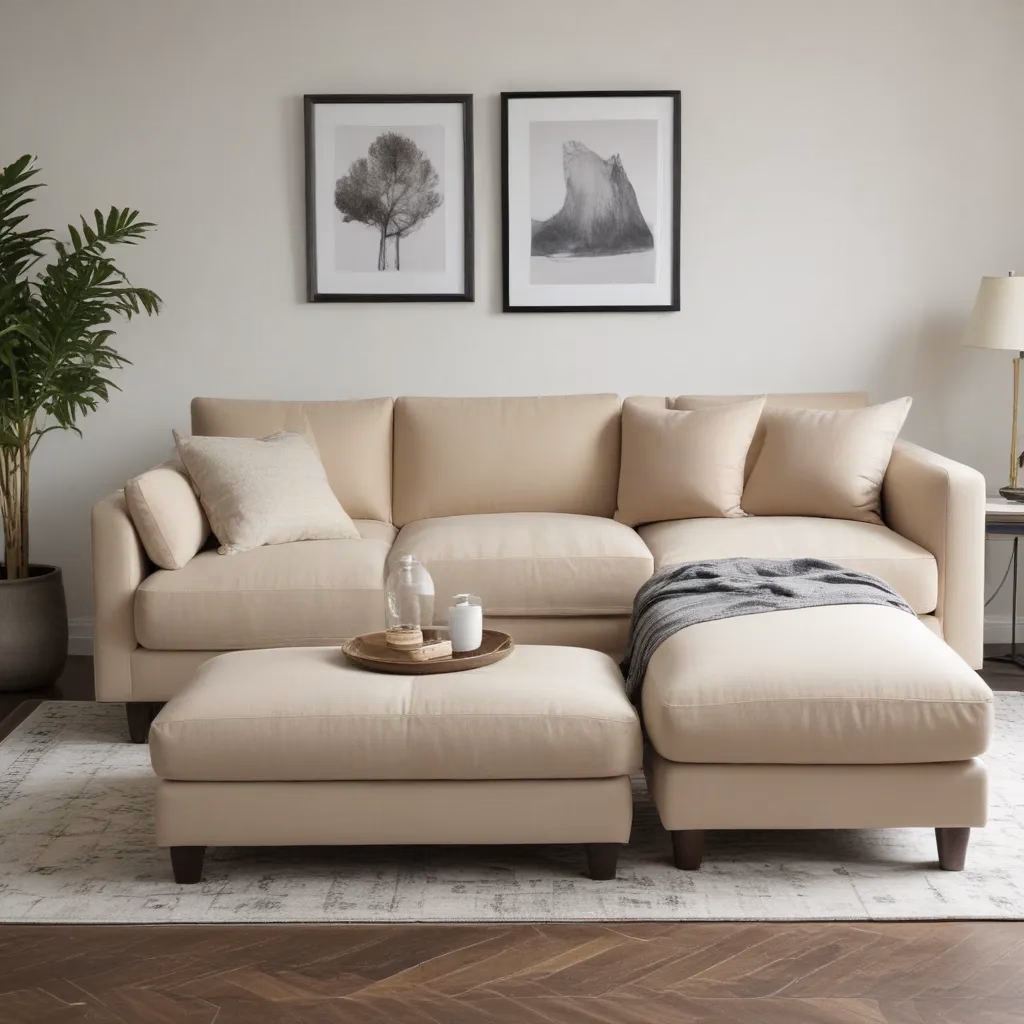
Arranging Furniture to Create Cosy, Inviting, and Conversation-Encouraging Nooks
Creating a living room that feels warm, welcoming, and conducive to meaningful social interactions can be a delightful design challenge. As an experienced furniture consultant and interior design writer, I’m thrilled to share my expertise on crafting cosy, conversation-encouraging nooks within your living space.
Now, this might seem counterintuitive…
Sofas and Upholstery Essentials
At the heart of any inviting living room lies the sofa – the centerpiece that sets the tone for comfort and connection. Let’s explore how to select the right sofa and upholstery to cultivate a space that promotes relaxation and social exchange.
Fabric and Upholstery Selection
Choosing Durable and Comfortable Fabrics
When it comes to living room upholstery, the fabric you select plays a crucial role in achieving that perfect balance of style and function. Look for fabrics that are not only visually appealing but also durable and easy to maintain. Stain-resistant microfibers, performance velvets, and cotton blends are all excellent options that can withstand the demands of everyday use while offering a luxurious feel.
Coordinating Upholstery with Room Decor
Beyond practicality, the fabric you choose should also complement the overall aesthetic of your living room. Consider how the sofa’s upholstery will interact with your other furnishings, textiles, and decor accents. Opt for colours and patterns that seamlessly integrate with your desired design scheme, creating a cohesive and visually harmonious space.
Considerations for Pet-Friendly Upholstery
For households with furry family members, selecting pet-friendly upholstery is a might want to. Look for fabrics that are easy to clean, resistant to shedding, and durable enough to withstand scratches and paw prints. Microsuede, leather, and performance fabrics are all excellent choices that can stand up to the demands of an active household.
Sofa Styles and Sizing
Identifying the Right Sofa Shape and Size
The shape and size of your sofa can greatly impact the flow and function of your living room. When choosing a sofa, consider the physical dimensions of the space and how the piece will fit within the overall layout. Sectionals and L-shaped sofas are excellent for larger rooms, as they can create defined conversation areas, while loveseats and apartment-sized sofas work well in more compact spaces.
Balancing Scale and Proportion in the Living Room
In addition to the sofa’s footprint, pay close attention to the scale and proportion of the piece in relation to your living room. A sofa that is too small or too large can throw off the balance of the space, making it feel either cramped or empty. Aim for a sofa that is proportional to the room’s dimensions, leaving enough space for traffic flow and other furniture.
Choosing Between Sectionals, Loveseats, and Sofas
The type of sofa you select can significantly impact the social dynamics of your living room. Sectionals with their wraparound design encourage group conversations and intimate gatherings, while loveseats and traditional sofas can be arranged to foster more one-on-one interactions. Consider how you envision your living room being used and choose a sofa that best aligns with your desired social atmosphere.
Sofa Placement and Arrangement
Defining Conversation-Promoting Layouts
The way you position your sofa and other seating can make a big difference in how people interact within the space. Arrange your furniture to create a conversation pit or U-shaped layout, where seating faces inward to encourage eye contact and natural dialogue. This encourages guests to face each other, fostering a sense of connection and engagement.
Optimizing Traffic Flow and Walkways
While crafting a cosy, conversation-friendly layout, it’s important to consider the flow of movement within the room. Leave ample space for walkways and double-check that that the furniture arrangement doesn’t impede foot traffic or create any bottlenecks. A well-planned layout will allow people to move freely and comfortably throughout the living room.
Incorporating Accent Chairs and Other Seating
In addition to the primary sofa, incorporating accent chairs, ottomans, and other seating options can further enhance the social dynamics of your living room. These pieces can be strategically placed to create intimate conversation nooks or provide additional seating for larger gatherings. Experiment with different arrangements to find the layout that best suits your needs.
Living Room Decor and Styling
Beyond the foundational furniture pieces, the way you style and accessorize your living room can greatly contribute to its overall warmth and inviting atmosphere. Let’s explore how lighting, textiles, and personalized touches can transform your space into a cosy and conversation-encouraging haven.
Lighting and Ambiance
Layering Lighting for Warmth and Coziness
Lighting plays a crucial role in shaping the mood and ambiance of a living room. Instead of relying solely on overhead lighting, create a layered lighting scheme that incorporates table lamps, floor lamps, and wall sconces. This approach allows you to control the intensity and direction of light, creating a warm, inviting glow that encourages relaxation and engagement.
Incorporating Task and Accent Lighting
In addition to ambient lighting, strategically placed task lighting and accent lighting can further enhance the functionality and visual appeal of your living room. Use focused task lighting to illuminate conversation areas, reading nooks, or specific architectural features, while accent lighting can be used to highlight artwork, architectural details, or decorative elements.
Creating Inviting Nooks with Lamps and Sconces
Position lamps and wall sconces to create cosy, intimate conversation nooks within your living room. These pockets of light can instantly transform a space, making it feel more welcoming and conducive to meaningful discussions. Consider placing lamps on side tables or using sconces to flank a fireplace or architectural feature, drawing the eye and creating a sense of coziness.
Textiles and Soft Furnishings
Selecting Complementary Throw Pillows and Blankets
Soft furnishings, such as throw pillows and blankets, are crucial for creating a warm and inviting atmosphere in your living room. Choose textiles that complement the colour palette and overall aesthetic of the space, while also considering their tactile qualities. Plush, textured fabrics like velvet, chenille, and faux fur can instantly elevate the level of comfort and cosiness.
Incorporating Area Rugs for Comfort and Grounding
Anchoring your seating arrangement with a well-chosen area rug can significantly contribute to the sense of comfort and coziness in your living room. Look for rugs with soft, dense piles that invite you to sink your toes into them. The rug’s size and placement should be carefully considered to define the conversation area and create a sense of intimacy.
Layering Curtains and Window Treatments
Curtains and window treatments can have a profound impact on the ambiance of a living room. Opt for layered window treatments, such as sheer curtains paired with heavier draperies, to control the amount of natural light that filters into the space. This not only enhances the cosy atmosphere but also provides the opportunity to incorporate additional textural elements and visual interest.
Accessorizing and Personalization
Curating Meaningful Decor and Artwork
Incorporating personal touches and meaningful decor can transform your living room into a space that truly reflects your unique style and personality. Display cherished artwork, family photos, or decorative objects that hold special significance. These personal elements will not only make the space feel more inviting but also encourage conversation as guests engage with your curated collection.
Balancing Functionality and Aesthetics
When accessorizing your living room, strike a balance between form and function. Incorporate decorative trays, coffee table books, and other visually appealing items, but double-check that that they don’t compromise the practical use of the space. Aim to create a harmonious blend of style and functionality that enhances the overall comfort and livability of the room.
Incorporating Greenery and Natural Elements
Bringing in fresh greenery and other natural elements can instantly infuse your living room with a sense of vitality and connection to the outdoors. Consider placing potted plants, cascading vines, or dried floral arrangements throughout the space, creating visual interest and a soothing, nature-inspired ambiance.
Sofa Care and Maintenance
Maintaining the comfort, appearance, and longevity of your living room sofa is essential for preserving the inviting atmosphere you’ve created. Let’s explore strategies for keeping your sofa looking and feeling its best.
Cleaning and Stain Removal
Upholstery Cleaning Techniques and Products
Regularly cleaning your sofa’s upholstery is key to keeping it looking fresh and vibrant. Familiarize yourself with the recommended cleaning methods and products for your specific fabric type, whether it’s spot cleaning, steam cleaning, or using a specialized upholstery cleaner. Proper care will help extend the life of your sofa and maintain its welcoming appearance.
Dealing with Spills and Pet-Related Messes
Accidents happen, and it’s important to know how to effectively address spills and pet-related messes on your sofa. Act quickly to blot up any liquid, and use the appropriate cleaning solutions to tackle stains. For pet hair and dander, regular vacuuming with a pet-friendly attachment or lint roller can help keep the sofa looking its best.
Maintaining Fabric Freshness and Vibrancy
In addition to cleaning, consider incorporating regular fabric protection treatments and deodorizing sprays to keep your sofa’s upholstery looking and smelling its best. These preventative measures can help maintain the fabric’s colour, texture, and overall freshness, ensuring your sofa remains a welcoming and inviting centerpiece in your living room.
Extending Sofa Lifespan
Proper Maintenance and Spot Cleaning
Adopting a proactive approach to sofa maintenance can significantly extend its lifespan. Regularly fluff and rotate the cushions, vacuum the upholstery, and address any minor wear or damage with quick spot-cleaning or small repairs. These simple steps can help preserve the structural integrity and aesthetics of your beloved sofa.
Rotating and Fluffing Cushions
To double-check that even wear and prevent premature sagging, make a habit of regularly rotating and fluffing the sofa cushions. This will help maintain their shape and support, keeping your seating comfortable and inviting for years to come.
Repairing Worn or Damaged Upholstery
If your sofa experiences more significant wear and tear, such as torn fabric or damaged seams, consider professional upholstery repair services. A skilled upholsterer can often restore the sofa to its former glory, saving you from the expense of a full replacement.
Sofa Replacement and Upgrades
Recognizing Signs of Wear and Tear
Over time, even the most well-cared-for sofa will eventually show signs of wear and tear. Keep an eye out for sagging cushions, frayed or discoloured fabric, and structural issues that may indicate it’s time to consider a replacement or reupholstery.
Evaluating the Need for Reupholstery
If your sofa’s frame and structure are still in good condition, reupholstering the piece can be a cost-effective way to breathe new life into it. This allows you to refresh the look and feel of your living room while preserving the underlying quality of the furniture.
Exploring Furniture Donation or Recycling Options
When it’s finally time to part ways with your old sofa, consider donating or recycling the piece responsibly. Many charitable organizations and furniture banks accept gently used sofas, while some municipalities offer specialized recycling programs for worn-out upholstered furniture.
Furniture Buying Guides
Investing in the right sofa is crucial for creating a cosy, conversation-encouraging living room. As you embark on your furniture shopping journey, keep the following factors in mind to double-check that you make a well-informed decision.
Sofa Shopping Considerations
Evaluating Comfort, Support, and Durability
When selecting a new sofa, prioritize comfort and support. Test out the cushioning, back support, and overall seat depth to double-check that your guests will feel truly at ease. Additionally, consider the construction quality and durability of the frame and upholstery to double-check that your investment will withstand the test of time.
Understanding Construction and Frame Quality
Look for sofas with sturdy, well-crafted frames that are built to last. Familiarize yourself with the different construction techniques, such as kiln-dried hardwood, mortise and tenon joints, and reinforced corners, which contribute to the sofa’s overall strength and stability.
Exploring Customization and Made-to-Order Options
Many reputable furniture brands offer the opportunity to customize your sofa, allowing you to select the perfect size, shape, fabric, and features to suit your living room’s needs. Considering made-to-order options can be a great way to achieve a truly bespoke piece that elevates the comfort and style of your space.
Budgeting and Cost Factors
Balancing Quality and Price Point
When it comes to selecting the right sofa, it’s important to strike a balance between quality and your budget. While high-end sofas may offer superior craftsmanship and materials, there are also many well-made, affordable options that can provide excellent value. Evaluate your needs and prioritize the features that are most important to you.
Considering Delivery, Assembly, and Returns
Don’t forget to factor in additional costs and considerations, such as delivery fees, assembly services, and return policies. Understanding these details upfront can help you make a more informed purchasing decision and double-check that a smooth furniture-buying experience.
Factoring in Long-Term Maintenance Costs
In addition to the initial purchase price, consider the long-term maintenance costs associated with your sofa. Factors like cleaning products, professional upholstery care, and replacement parts can add up over time, so be sure to factor these into your overall budget.
Sustainable and Ethical Furniture Choices
Researching Eco-Friendly Materials and Production
As you shop for a new sofa, look for furniture makers that prioritize sustainability and ethical production practices. Seek out sofas made with renewable, biodegradable, or recycled materials, and consider the environmental impact of the manufacturing and shipping processes.
Supporting Local and Independent Furniture Makers
By purchasing from local or independent furniture makers, you can not only find unique, high-quality pieces but also support your community and the artisans who create them. This can be a great way to find customized solutions and invest in furniture that aligns with your values.
Evaluating Second-Hand and Vintage Furniture Options
Exploring the world of second-hand and vintage furniture can be a fantastic way to find one-of-a-kind sofas that brim with character and history. Not only are these pieces often more affordable, but they can also be environmentally friendly alternatives to buying new. Just be sure to thoroughly inspect any pre-owned furniture for quality and safety before making a purchase.
Ready to create a living room that encourages cosy conversations and meaningful connections? Visit SofaSpectacular.co.uk to explore our curated collection of high-quality sofas, upholstery, and home decor essentials. Our team of experienced furniture consultants is here to help you find the perfect pieces to transform your living space into a welcoming, conversation-friendly oasis.
Example: Living Room Makeover Series with Modular Sectionals



